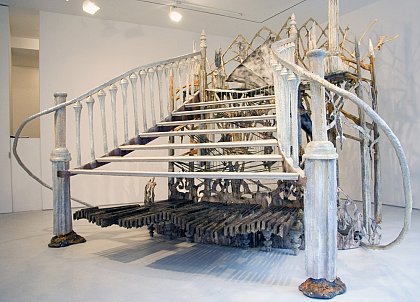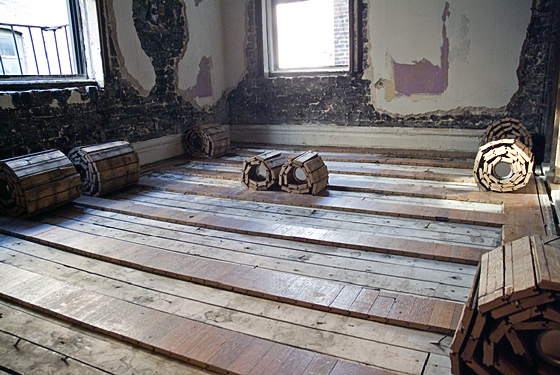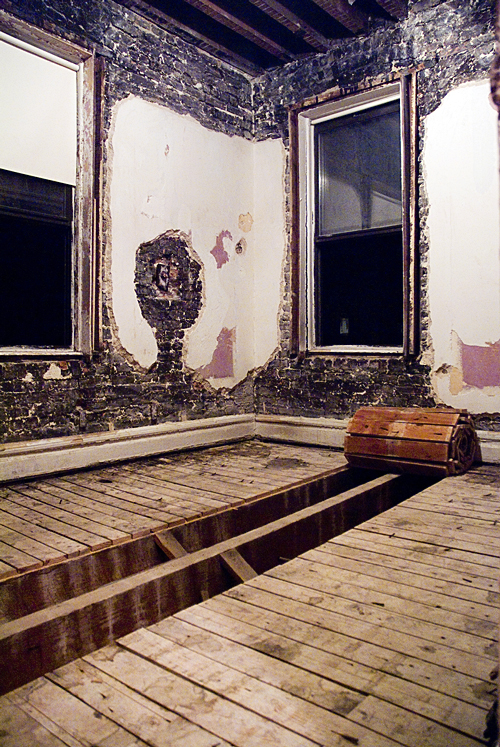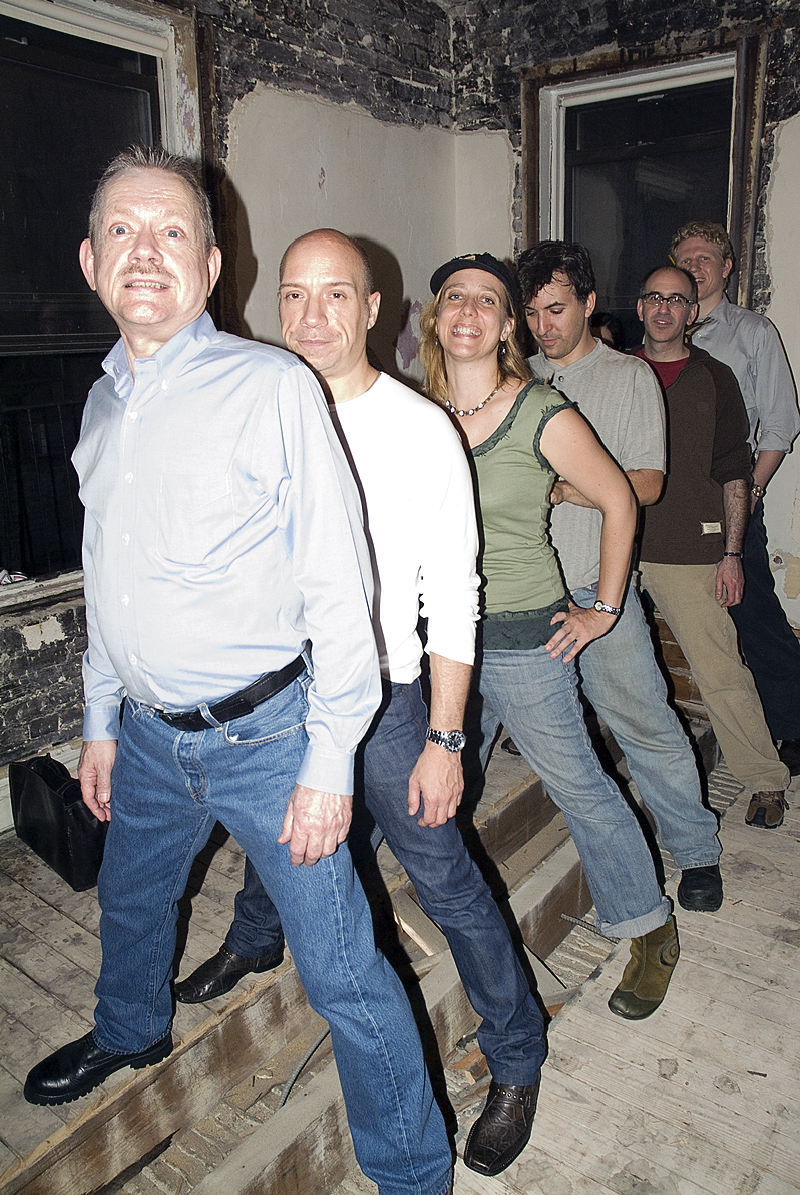This is shaping up to be a good year in Chelsea. I've been on this beat for two years now and the second was worse than the first, but this, the beginning of my third year, is going really well so far. Joe Giannasio, Chris Ofili, Daniel Rozin, Steve Ellis -- there's been a lot of good, maybe even great, work showing in New York's art scene. Last night was another night of excellent shows.
I arrived at PPOW at about 6:30 expecting to meet Stephanie, who ended up getting stuck in traffic. That gave me a good while to sit with the sculptures of Judy Fox. I'd already seen one of her works at Why the Nude?, where her sculpture of Krishna almost turned me gay with its beautiful depiction of the male nude. This show is much more female.
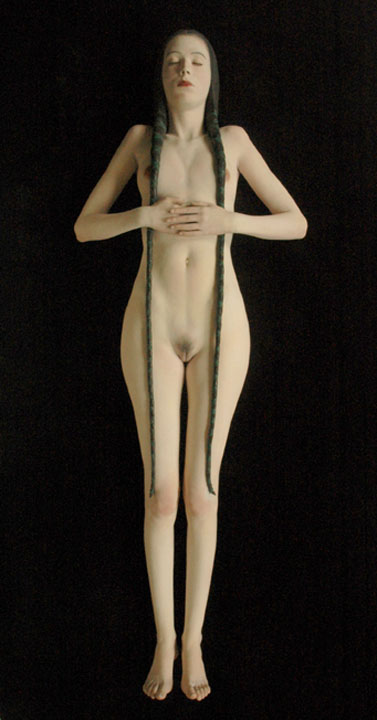
Judy Fox, Snow White, 2007, terra cotta and casein, 8.5x58x25 inches
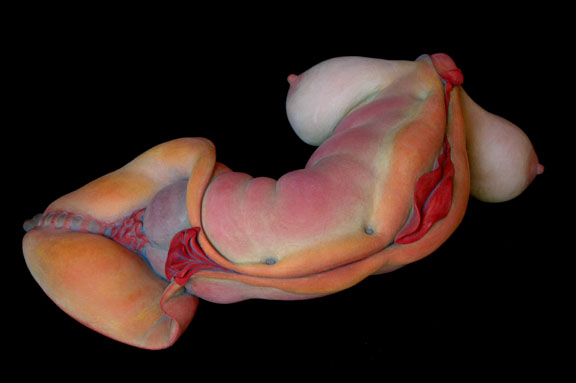
Judy Fox, Lust, 2007, terra cotta and casein, 8x26x15 inches
I spoke to her a bit. I led off with my anecdote about her Krishna, almost verbatim as I'd written it, and she asked me, "Do you have a blog?" She went on to tell me that the model for that sculpture, who lives in India, had been e-mailed a copy of my review and he forwarded it on to her crowing about how beautiful he was and how he'd almost made me gay. "I guess this installation will turn you back the other way," she joked.
I did find myself strangely -- or perhaps not so strangely -- drawn to Snow White's pudendal cleft, although I couldn't look at it too long without feeling like I was inappropriately ogling an actual person, even though I was pretending to study the delicate brushwork of her pubic hair. Judy told me she's never been a painter; but she could be, she could be. And if she was to become a painter, she'd be a Northern European Renaissance painter, she confided in me. She believes art is about clarification.
Standing against the wall I found myself overwhelmed by sexual feelings. I don't know if it was the art or the people at the show or just my general mood at the time, but suddenly I was awash in a craving for sex, any sex at all -- if anyone had come on to me at that point, male or female, old or young, fat or thin -- anyone -- I would've run off with them right there in search of a dark closet or deserted office.
(It's just as well no one propositioned me, though, since as it was, earlier, I couldn't find the restroom I needed for much less exciting activities. I ended up going out of the building and into a show halfway down the block, then covering most of the distance back inside that building before I finally found the bathroom.)
But back to Snow White and the Seven Sins: In the end, I found the use of the Seven Deadly Sins unnecessary to the piece. In fact I feel they're a distraction. The Seven Deadlies were really kind of arbitrary -- the number seven was chosen by medieval scholars for its mystical significance (is there really that big a difference between sloth and gluttony? Envy and greed?) -- and form a too-easily grasped handle on the piece. I think it might even discourage really engaging with each "dwarf" as made by Judy. The pieces set up resonances both tactile and visual without the added layer of the titles to make them sluggish.
Judy told me the piece is an exploration of the Freudian unconscious; I think the piece certainly explores eroticism and sex in a very earthy way. I think it's telling, too, that Snow White is above her glass casket, exposed and revealed -- altogether it's very sexy and voyeuristic, like a fantasy of having a blindfolded and bound partner to whom you can do anything, anything at all. And the dwarfs all rally around, each one looking to me like a living embodiment of Freud's polymorphous perversity, getting off using every available body part.
Stephanie finally got to the gallery and by then I was no longer horny, which is good because it saved us an embarrassing scene of her smacking me with her hat. After she spent some quality time with Judy's work we moved on to Yossi Milo to see Oskar Korsár's No Wind Can Blow Us Down.
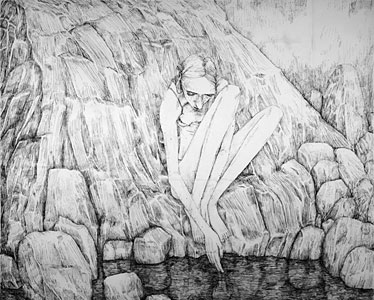
Oskar Korsár, More Than 70 Percent of the Earth is a Mirror, 2007, ink on paper
Although the drawings might seem, at first glance, to be simplistic and maybe crude, I was charmed by their gravity and love. I felt awkward looking at this young, nude pre-adolescent -- as awkward as she herself would feel in that in-between body.
The whole effect is heightened by Oskar's wabi sabi approach to his materials. Each large drawing -- the Website doesn't have dimensions, but I'd estimate about 20 by 30 inches -- is made up of multiple pieces of overlapping paper, some of which are pasted on to cover previous false starts on the drawing, some of which show other drawings on the other side. The paper itself looks well-handled and a little old, like it was rustling around a box in an attic for a few years before being used. Oskar's inking is nowhere near as neat and regular as Sendak's despite the resemblance; and old Maurice would never send out an illustration where he'd obviously dripped ink in big blots.
Rarely have I ever felt so warmly protective towards drawings.
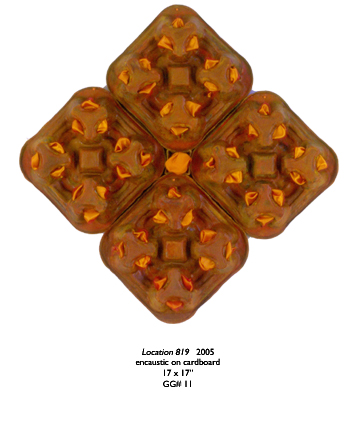
Gail Gregg, Location 819, 2005, encaustic on cardboard, 17x17 inches
Gail gets an interesting texture with the encaustics but after a very short time I felt her paintings were rather shallow: "Look! If you flatten out this box, it looks like a Mayan design! Or a stylized woman! Or something else!"
Stephanie, for her part, said she'd buy one in particular if she had the money. Gail's prices are very high, though, as we saw when I was somewhat unceremoniously handed a price list by a woman I assume was Luise Ross.
"I'll make you one," I told Stephanie, which led to a brief discussion of how one of our criteria for art quality is whether or not we feel we could make it ourselves. If we think we could, we don't like it as much. Maybe that's mean, maybe it's delusional, but it's how we feel.
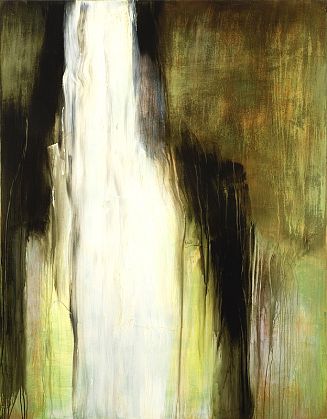
Shawn Dulaney, Listening, 2007, acrylic on linen over panel, 56x44 inches
Shawn paints in a comforting kind of Abstract Expressionist style, and really there are plenty of painters doing similar goobery work (Stephanie calls it "painterly"). But Shawn's has a presence whereas most don't and that makes all the difference. Where I might have walked on by saying blah, for her work I paused and just absorbed them.
All in all it was an excellent night in Chelsea. Admittedly I've left out a couple of exceedingly mediocre things we saw, but, really, why ruin it? Any night including Judy Fox is a win.
